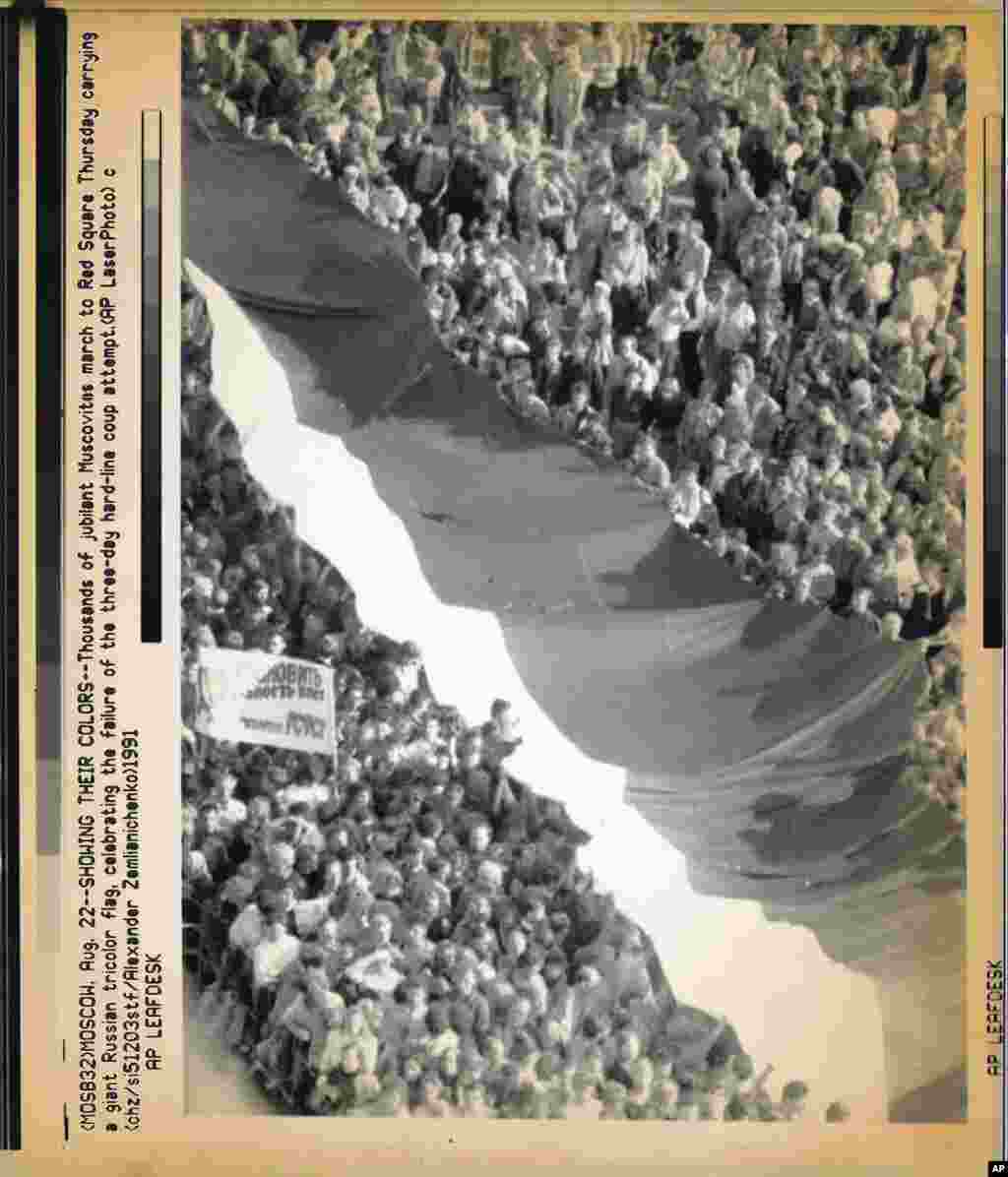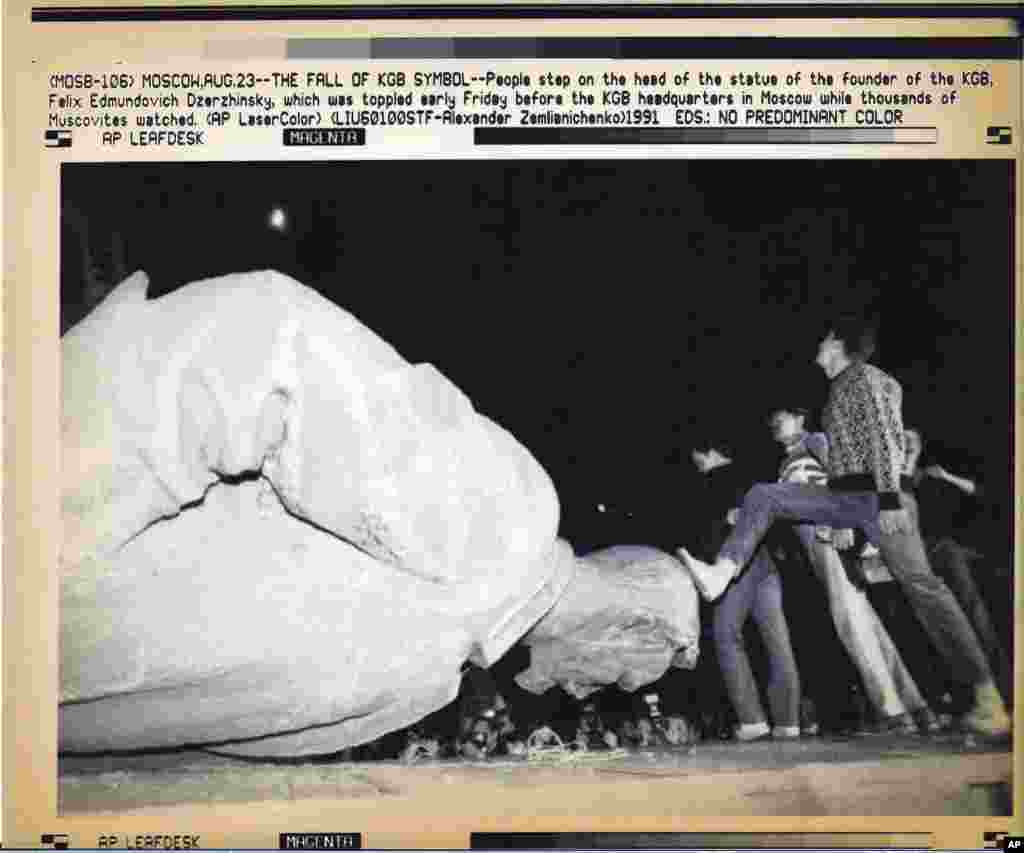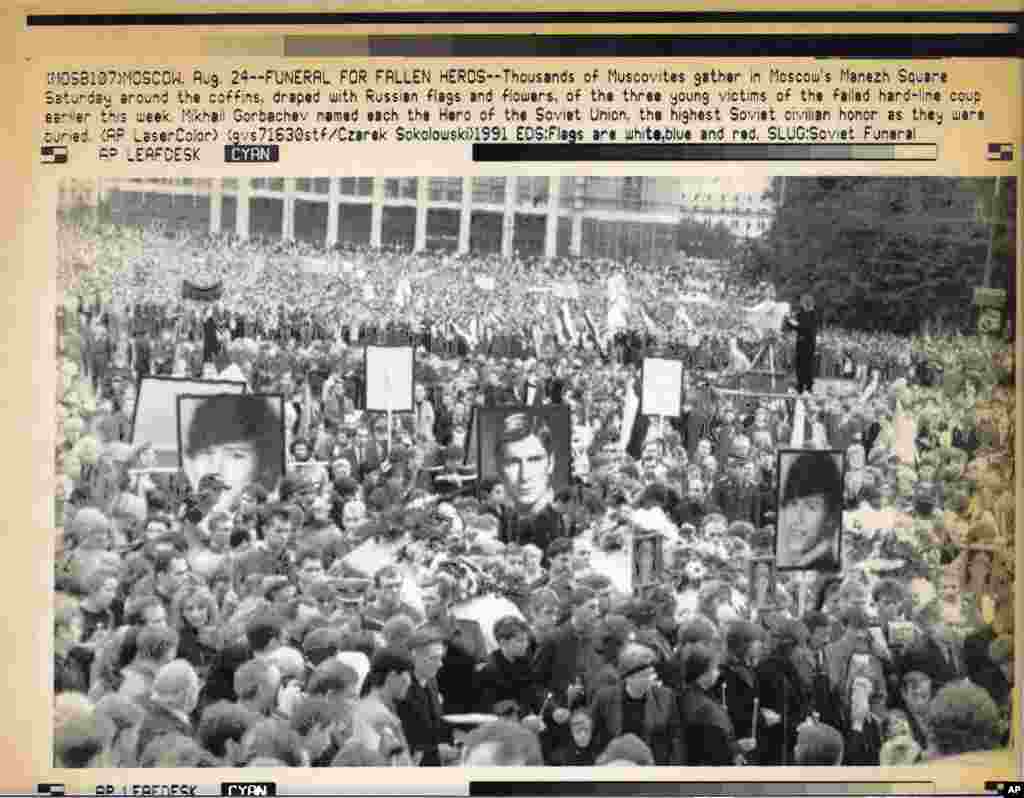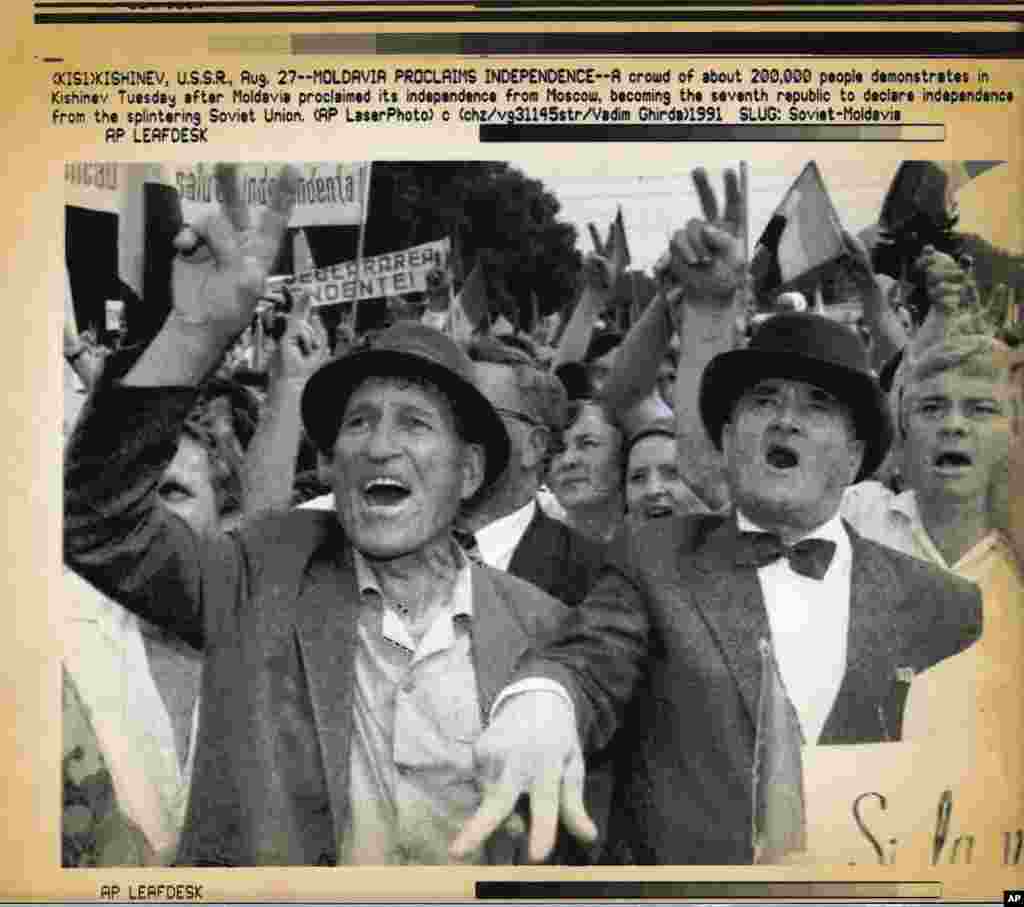The world was captivated 30 years ago by images from Moscow as a coup attempt unfolded with hundreds of thousands of protesters standing up against communist hard-liners who had declared a national emergency and were trying to roll back Soviet leader Mikhail Gorbachev's reforms.
The AP photo staff in Moscow would win the Pulitzer Prize for its "spot news" coverage of the August 1991 coup and the subsequent collapse of the Soviet regime.
AP photographer Alexander Zemlianichenko rushed out on the streets of Moscow on the morning of August 19 and made his way to the building where Russian Federation President Boris Yeltsin had his office.
"Yeltsin was widely seen as the champion of democratic reforms, defying those hard-liners who were trying to preserve Communist Party rule," Zemlianichenko says. "His offices in a towering riverside building, dubbed the 'White House' by Muscovites, served as a rallying point for those who opposed the coup."
"When I reached the building, crowds were swarming the tanks sent to surround the building," Zemlianichenko says. "Some of the tank crews got out of their vehicles and declared that they would side with protesters.""Yeltsin arrived and climbed atop one of the tanks to make a passionate speech, urging people to stand up against the coup plotters," he says. "I spent that chaotic day taking photos of protesters around Yeltsin's headquarters and running back to the office to have my rolls of film developed."
The work of Zemlianichenko and other AP photographers was relayed to media organizations around the world using what was then the latest transmission technology -- so-called "electronic darkrooms" that received images from AP's "picture-a-minute, digital photo delivery highway."
Also known as the PhotoStream system, the delivery network allowed a photograph scanned in Moscow to be sent by satellite to every AP subscriber that had the receiving equipment.
Rather than sending digital photo files, as is the norm now, AP’s PhotoStream technology in 1991 delivered prints on photo paper along with suggested captions.
In the early morning hours of August 23, after the coup had been defeated by the mass demonstrators and soldiers who had sided with Yeltsin and Gorbachev, Zemlianichenko was still out on the streets taking photos of "exultant crowds across the city."
"I caught the moment when demonstrators pulled down a large statue of Feliks Dzerzhinsky, the founder of the Soviet secret police, in front of KGB headquarters on Lubyanka Square," Zemlianichenko says. "It was a watershed moment that symbolized the collapse of the repressive Soviet system."
Archived copies of AP PhotoStream prints and their original captions offer a glimpse of how the work of Zemlianichenko and his colleagues appeared to the world as the failed August 1991 Soviet coup was unfolding.









